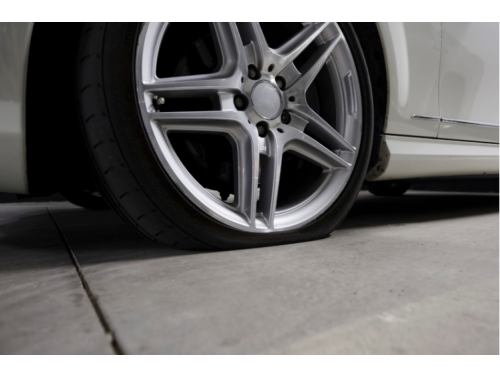
There are lots of factors that affect how safe your vehicle is to drive. Having good quality tyres that have the correct amount of tread and are pumped up to the recommended pressure could improve the vehicle’s braking performance, its grip on the road and its economy. Therefore, tyre pressure is more important than you might have first though.
It’s hard to state an exact figure to determine what pressure you should set your own tyres to. It all depends on what car you have, how many people you travel with and the size of your wheels. Average recommended tyre pressure is usually between 30 and 35 PSI.
To find the correct tyre pressure for your vehicle, you should check the owner’s manual or the tyre and loading information placard usually printed inside the driver’s door. You will likely find a table that shows the correct tyre pressure depending on the size of your tyres and how many people are sitting in the car. Alternatively, you could use an online tyre pressure search. Simply enter your registration number to find out what the recommended tyre pressure is for your vehicle.
How to check tyre pressure
It’s important to regularly check your tyre pressure to ensure that it doesn’t drop too low. You should try to check them once a month and top them up when needed. To do this, you’ll need to drive to your local petrol station or garage. These establishments usually have an air compressor.
First, you should remove the screw caps from the valve on the tyre. Don’t worry about air escaping. The valve will allow a little bit of air out until it seals. Use the tyre pressure gauge and push it onto the end of the valve and check the reading on the screen. If your tyres need more air, use the buttons to increase the amount you want to put into your tyres. The machine will usually beep when the correct pressure has been reached. Remove the pressure gauge and reattach the screw. Repeat this process for each tyre.
Where possible, you should check your tyre pressure when they’re relatively cold. For example, take the reading shortly after you’ve set off and not when you’ve been driving for 30 minutes.
How long should new tyres last on a car?
If you have a set of new tyres, you shouldn’t neglect them just because they’re new. You should continue to regularly check the tyre pressure and the tread to ensure that they’re safe to drive on.
Contrary to popular belief, tyres do actually have an ‘expiration’ date. The moisture that is in your tyres can evaporate over time, causing your tyres to go brittle. Cracks might form and the tyre will be significantly weakened. Even if your tyres seem to be in good condition and have lots of tread left, you should aim to replace them every 10 years.
Depending on the quality and manufacturer of your tyres, they could last from 30,000 miles up to 80,000 miles. To figure out how long your tyres will last, think about how many miles you drive annually.
To increase the lifespan of your tyres, you should make sure that they’re always inflated to the recommended pressure. Underinflated tyres will wear a lot faster. You might also want to take the vehicle to a garage to have the wheels rebalanced. If your tyres are out of line with one another, you may be able to feel your tyres wobbling when you reach certain speeds and they will wear down much faster. Having your wheels balanced only takes a few minutes.
How to read a tyre sidewall
If you take a look at your tyre, you might notice that there’s some letters and numbers written on it. These all mean something and it is important to properly understand them.
The biggest set of characters on the tyre refers to tyre size. An example of this might be 215/45 16V (90). The first three digits, 215, refer to the width of the tyre in millimetres. The digits after the forward slash relate to the aspect ratio. This is a percentage of the tyre width so, in our example, the profile height of the tyre is 45 per cent of its width. The next two digits indicate the diameter of the wheel rim in inches. The letter V is the speed rating of the tyre. Every tyre has an individual speed rating that tells you the maximum speed your tyres can maintain. The final number is the load index. This tells you the maximum weight capability of the tyre. In this example, a load index of 90 can hold a maximum of 600kg.

